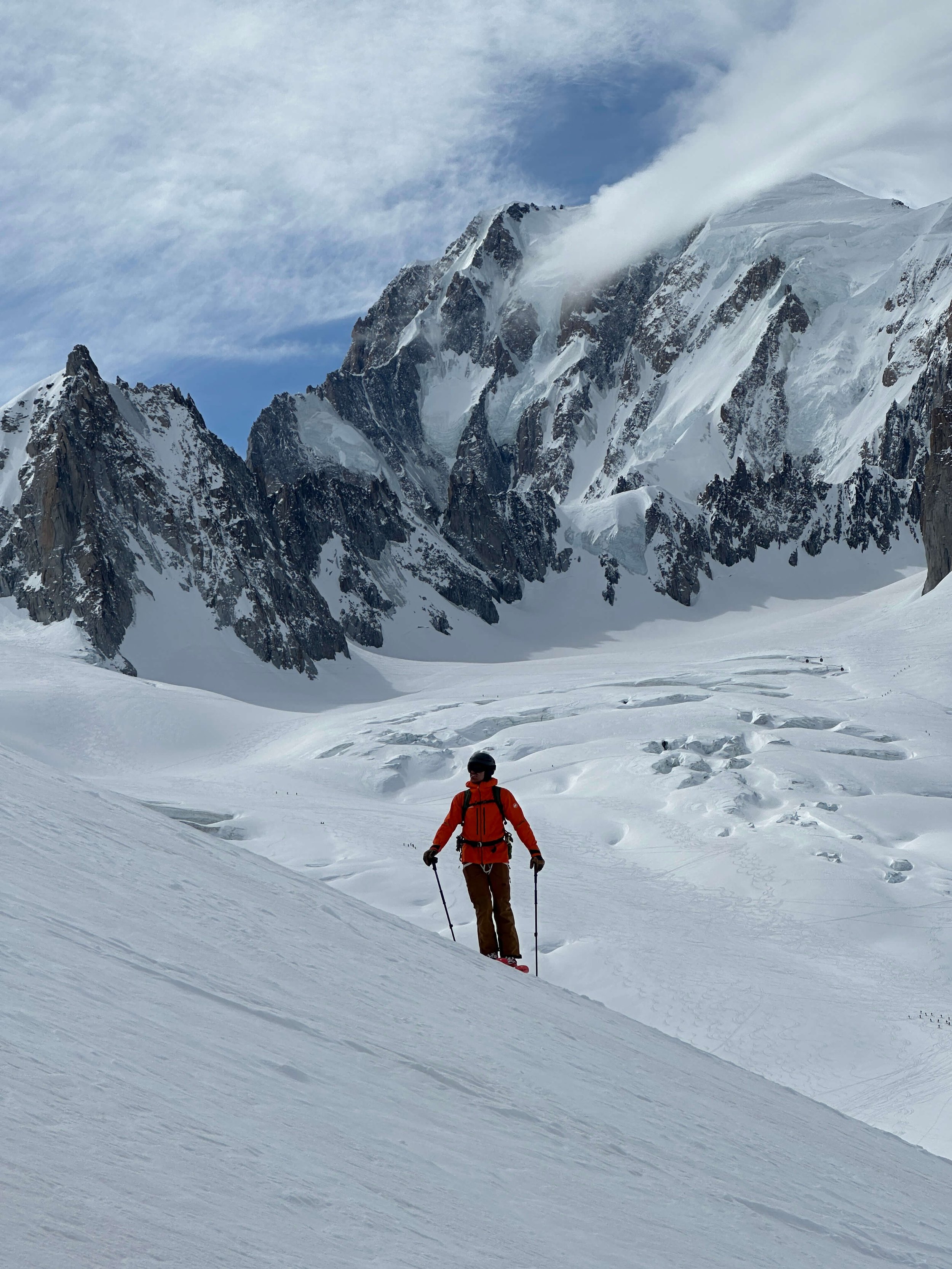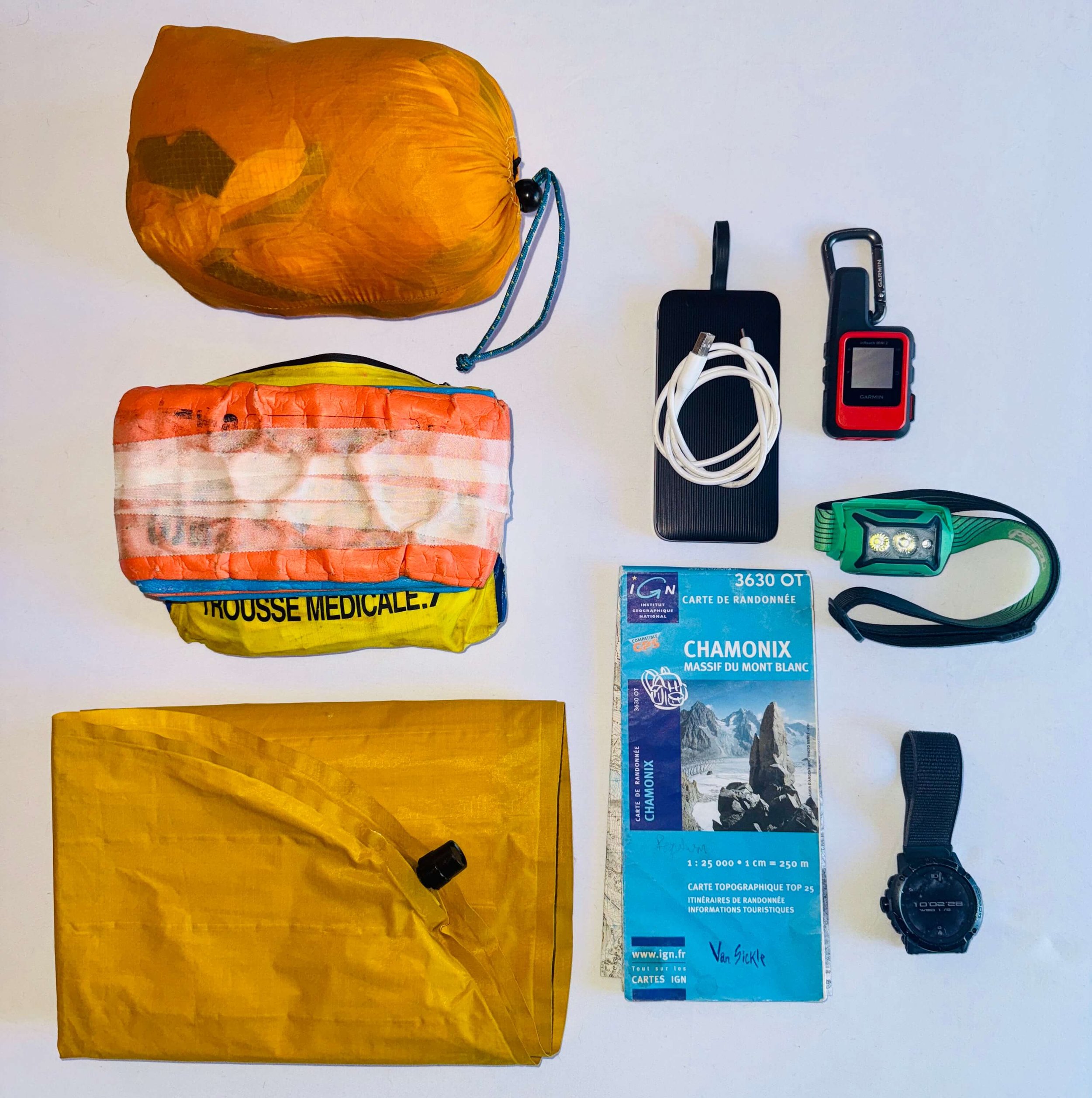Equipment Selection: HUT Based Ski Touring
Hut-to-hut skiing in the Alps is an incredibly special experience. The support available in the European mountains and the catered aspect of the huts make for a very civilized and minimalist approach to traversing glaciated terrain. Skiing on glaciers is not without its hazards though and special equipment is necessary to make it a reasonably safe activity. Here is a look at the equipment that I bring when guiding on classic ski tours like the Haute Route and any other glaciated hut-supported trip.
Avalanche Rescue Kit
Firstly, like on any backcountry ski tour, we always bring our beacon, probe, and shovel. This is standard equipment for traveling in avalanche terrain. A three antenna beacon is the standard these days and a metal shovel is a must. While traveling on a glacier, a probe is used for more than just companion rescue. It can be a very useful tool to be sure we are not standing on any cracks when making transitions, probing for the edge of a cornice, or even creating some definition in the snow in front of the leader when the fog rolls in and becomes impossible to know which direction is up or down.
Emergency Equipment
Although there is a running joke in the Alps that our phones are enough of a first aid kit because of the liberal use of helicopters, the reality is that helicopters can't always fly, and bleeding must be dealt with immediately. I carry a fairly robust first aid kit that allows me to address trauma, some tools to support an injured knee or arm, a blister kit, and some basic meds. In addition to that I carry a rescue sled that doubles as a shelter, as well as a 3/4 length inflatable sleeping pad to get an injured person off of the snow.
Navigation and Communication
In this day and age, our phones are amazing navigation tools. I use the Gaia and Caltopo to help keep the team on track, and in a white out they are by far the most effective tools ever created. However, they can have their limitations. Apps can be glitchy, phones can run out of battery, and also get lost. It is important to have redundancy and backups. I will always carry a spare battery and a paper map, and in addition, my watch has a compass and GPS. Also, before heading out, I will educate people on how to use these apps and will share the GPX files. And finally, in my opinion, an inReach or similar device is a no-brainer, with two-way satellite enabled text messaging functionality and an emergency SOS feature.
Repair kit
Not being able to fix a broken buckle or missing the right bit to adjust a binding on the glacier can suddenly make a group feel a long way out to sea. A thoughtful repair is critical to any team’s kit:
Spare batteries for beacon
Leatherman multi-tool
Ratchet kit with a variety of bits
Bailing wire
Hose clamp
Tail clip
Skin wax
Zip ties
Ski strap
Hand warmers
Glacier travel and ski mountaineering kit
When traveling on the glacier we need to be prepared to manage crevasses. Much of the time we are walking and skiing on a glacier we are not roped together. We do need to be roped together when the conditions warrant it, and we need to be able to assist anyone else in the area who may need help if someone else ends up in a crevasse. In addition to that, one of the most fun things about ski mountaineering in the Alps is the technical ascents and descents. On the Haute Route, we will climb up several couloirs, and on some variations of the route, we will make rappels.
My kit for this includes:
30 or 60-meter hyperstatic Petzl Rad line
Lightweight ski mountaineering harness
Lightweight ice axe
12cm ice screw
Traxion, progress capture/integrated pulley device
1x 240cm and 1x 120cm sling with carabiners
Prussik loop and locker
Triple action locker for clipping into the rope
Belay device and locker
Lightweight crampons that fit ski boots
Ski crampons
Ski leashes
Hut gear
Thankfully the huts provide nearly everything that we need except personal accouterment. A few things that I like to have with me besides personal toiletries are a cotton t-shirt and lightweight pajama pants to relax in at night. A headlamp for getting going in the morning, as well as a battery pack to charge my phone with, as the huts can get pretty busy sometimes, and the outlets can get occupied (I never assume that I will be able to charge my phone at the hut). I also like to have earplugs for sleeping.
Each hut has different rules regarding liner sacs. Some require them, while some forbid them and provide disposable sacs. Nearly every hut provides crocs or slippers for use in the hut. However, I like to carry my flops while ski touring anywhere in the Alps. Plans can change, or you may find yourself in a different valley than you planned, and have to sit on a train for some hours, or you just end up at a restaurant and don’t want to party in your ski boots!
Each spring I guide hut based ski touring in the Alps with Skyward Mountaineering. Join me on the Haute Route, a classic week long ski tour connecting Chamonix and Zermatt! Want more info about ski touring in the Alps or learning backcountry skiing techniques in the San Juan mountains? Contact us, we’re here to help.





